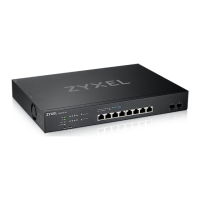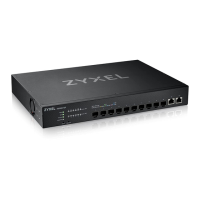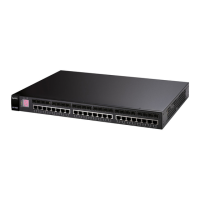Chapter 13 Spanning Tree Protocol
XS1930 Series User’s Guide
152
13.8.2 MST Region
An MST region is a logical grouping of multiple network devices that appears as a single device to the
rest of the network. Each MSTP-enabled device can only belong to one MST region. When BPDUs enter
an MST region, external path cost (of paths outside this region) is increased by one. Internal path cost (of
paths within this region) is increased by one when BPDUs traverse the region.
Devices that belong to the same MST region are configured to have the same MSTP configuration
identification settings. These include the following parameters:
• Name of the MST region
• Revision level as the unique number for the MST region
• VLAN-to-MST Instance mapping
13.8.3 MST Instance
An MST Instance (MSTI) is a spanning tree instance. VLANs can be configured to run on a specific MSTI.
Each created MSTI is identified by a unique number (known as an MST ID) known internally to a region.
Thus an MSTI does not span across MST regions.
The following figure shows an example where there are two MST regions. Regions 1 and 2 have 2
spanning tree instances.
Figure 111 MSTIs in Different Regions
13.8.4 Common and Internal Spanning Tree (CIST)
A CIST represents the connectivity of the entire network and it is equivalent to a spanning tree in an STP/
RSTP. The CIST is the default MST instance (MSTID 0). Any VLANs that are not members of an MST instance
are members of the CIST. In an MSTP-enabled network, there is only one CIST that runs between MST
regions and single spanning tree devices. A network may contain multiple MST regions and other
network segments running RSTP.

